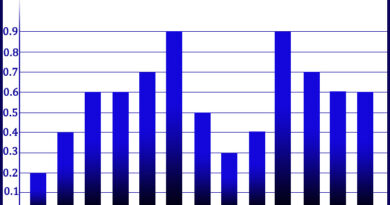Eurozone Private Sector Expands Most Since Mid-2022
Alleviating fears of a recession, the euro area private sector activity grew the most since mid-2022 as there was a quick upturn in the services sector, while manufacturing activity landed on broad stabilization in February.
The final composite output index rose to 52.0 in February from 50.3 in January, data released by S&P Global showed on Friday. The flash reading was 52.3.
The reading was above the 50.0 level that separates growth from contraction for the second straight month.
The service sector was the principal driver of February’s quicker upturn. At the same time, manufacturing activity broadly stabilized ending an eight-month sequence of decline in production.
At 52.7, the services Purchasing Managers’ Index, or PMI, advanced to an eight-month high from 50.8 in the previous month, and was also above the flash 53.0.
Although marginal, new business, at the composite level, grew for the first time since May 2022. Backlogs of work dropped further, extending the current sequence of depletion to eight months.
Meanwhile, job creation was sustained in both manufacturing and services companies. The growth in workforce numbers was stronger than the series average.
Further, firms were optimistic that output would increase over the next twelve months and confidence was the strongest in almost a year.
The survey showed alleviation in cost pressures across the currency bloc, solely reflecting the trend in manufacturing. By contrast, service sector operating costs increased substantially amid reports of wage pressures.
Prices charged for goods and services increased sharply, albeit at the weakest pace since December 2021.
There is a concern that signs of persistent elevated selling price inflation, combined with the surprising resiliency of the economy, will embolden the European Central Bank into more aggressive monetary policy tightening, Chris Williamson, chief business economist at S&P Global Market Intelligence, said.
Such aggressive tightening will pose a downside risk to demand growth in the months ahead, Williamson added.
Data from Eurostat showed a sharp slowdown in producer price inflation in January on easing energy price growth. Producer prices posted an annual increase of 15.0 percent in January after a 24.5 percent surge in December.
However, excluding energy, producer price inflation slowed only moderately to 11.1 percent from 12.4 percent.
On a monthly basis, producer prices declined 2.8 percent in January due to 9.4 percent fall in energy prices, data showed.
PMI data suggests that economic activity in the currency bloc has been fairly resilient in February, Capital Economics’ Adrian Prettejohn said. This should encourage the European Central Bank to press on with further rate hikes, the economist added.
February data revealed relatively strong performances from Spain and Italy, with respective rates of growth accelerating to nine-month highs. Although growth returned to the “core” of the euro area namely France and Germany, expansions were muted.
Ending a seven-month sequence of contraction, Germany’s private sector returned to the expansion territory in February.
Germany’s composite output index rose less-than-estimated to 50.7 from 49.9 in January. The flash score was 51.1. At the same time, the services PMI climbed marginally to 50.9 from 50.7, but stayed below the flash 51.3.
In France, the service sector pulled the private sector economy back into the expansion zone in February. The composite PMI registered 51.7 versus a below 50.0 score of 49.1 in the previous month and the flash 51.6.
France’s services activity grew for the first time since October last year. The final services PMI improved to 53.1 from 49.4 in January and the flash 52.8.
Underpinned by solid growth in manufacturing output and a moderate growth in services, Italy’s private sector maintained growth momentum. The corresponding index climbed to 52.2 from 51.2 in the preceding month. The services PMI hit an eight-month high of 51.6 from 51.2 a month ago.
Spain’s private sector PMI posted the joint strongest reading in a year. The composite output index improved to 55.7 from 51.6 in January. The services PMI advanced notably to 56.7 from 52.7 a month ago.
Source: Read Full Article



